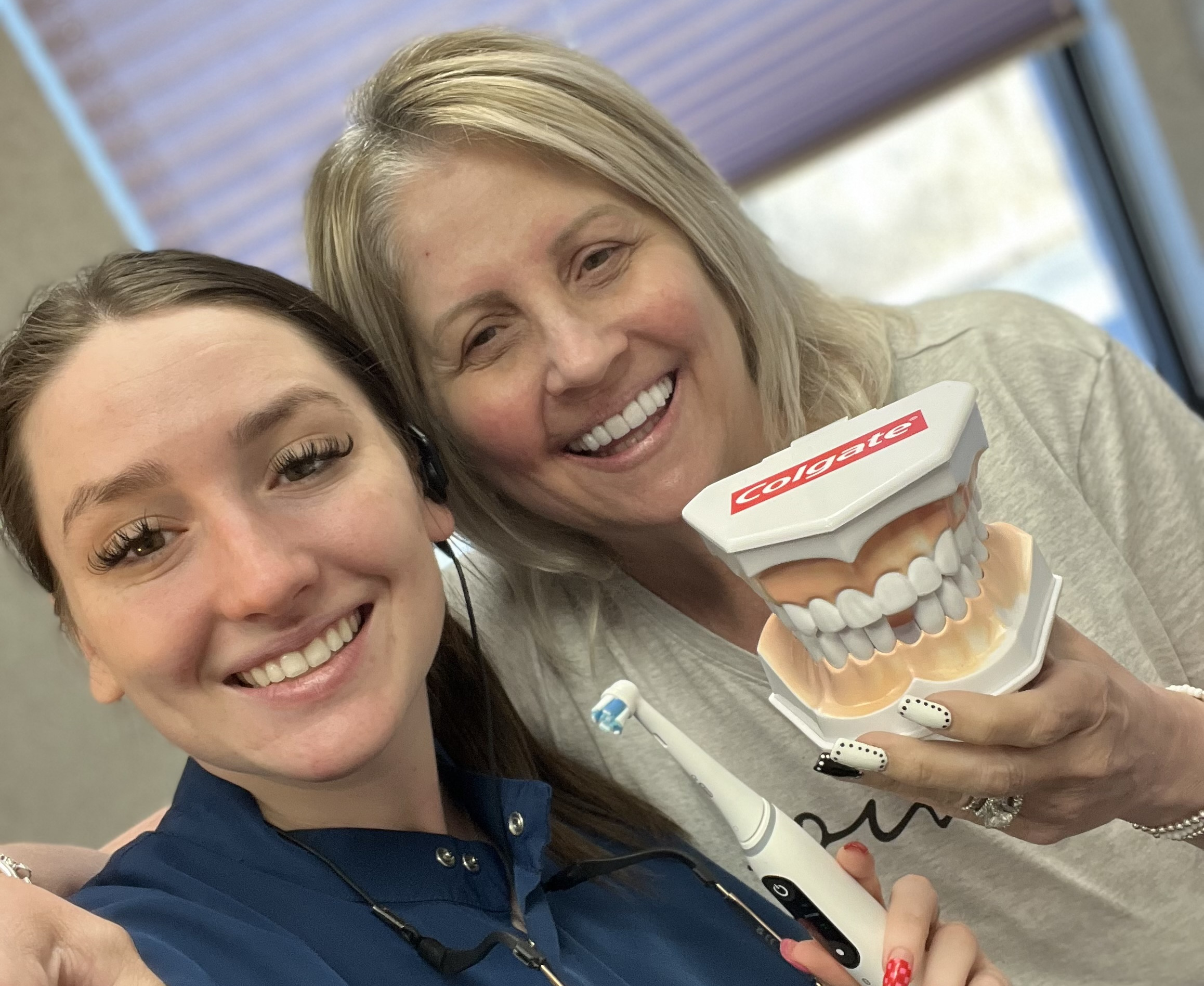
How Gum Disease affects your appearance

Gum disease is more common than you think, with over 47% of American adults suffering from the condition. Although you might assume that gum disease only affects the gum tissue, this all-too-common condition can affect the appearance of your teeth, your jawline, and even your overall face shape. The longer your gum disease is left untreated, the more drastically the condition can alter your looks.
From the initial consultation
to post-procedure care,
we are here to support you
every step of the way.

Healthy Gums
To understand gum disease, it is important to be familiar with how healthy gums should look and feel. Healthy smiles have springy, comfortable, gums that are pink or coral in color. The gum tissue itself is resilient, recovering quickly from things like accidental toothbrush abrasion. When your smile is healthy, there will be little, if any space between your teeth and gums, referred to as the “pocket.” You teeth should feel comfortable and strong, and although all teeth move slightly in their sockets, they shouldn’t feel loose at all. Now that you understand how healthy teeth should feel, read more about the signs and symptoms of advancing gum disease.
Our team is ready to help you achieve the smile you’ve always dreamed of.
Gingivitis
Gingivitis, also called gum disease, starts off very mildly. Your gums might be red or tender, and they might bleed easily when you floss. However, because gingivitis is caused by plaque accumulations on your teeth, your teeth might have an uneven, mottled appearance, or look yellow. Because bacteria accumulations can irritate your gums, your gums might start to pull away from your teeth slightly, causing pockets between your gums and teeth. Your gum line might start looking less precise, because your gums will develop a slightly jagged appearance.
Early Periodontitis
If gingivitis is left untreated, the plaque accumulations on your teeth can harden into tartar, or calculus. Gum tissue continues to pull away from the teeth, making your smile look older and less attractive. Tartar accumulations can look dark yellow, collecting in the crevices between teeth or in patches that discolor the visible surfaces of teeth.



Dr. Katherine Roll or Dr. Kelly Williams can restore your gums to perfect health. Contact us to set up a consultation. The sooner the better when it comes to gum disease!
Moderate Periodontitis
As periodontal disease progresses, the bacteria and inflammation can migrate deeper into the jaw, where it starts to attack the ligaments that attach your teeth to the bone. Moderate periodontitis can cause a medium level of detachment, resulting in up to 50% loss of tooth stability. At this stage, teeth will be visibly loose. Teeth will also have severely recessed gum tissue, creating an aged, worn look.
Advanced Periodontitis
By the time advanced periodontitis has set in, the underlying gum tissue disintegration is highly visible. The teeth will be severely discolored, loose or missing, and have deep pockets between each tooth and the gum tissue nearby. As teeth are lost, the neighboring teeth will migrate to fill the space, resulting in a gap-toothed appearance. The tissues that support the teeth have lost more than 50% of their structural integrity at this point, making tooth loss a common and inevitable occurrence.
We are committed to delivering
Excellence in Dental Care



Trust our expert team to
help you achieve a smile
that reflects your true self
Excellence and Expertise


With dental implants, you can restore your smile, regain your confidence, and enjoy all the benefits of having strong, healthy teeth.
How Tooth Loss Affects Face Shape
Unfortunately, tooth loss can affect much more than your smile. Teeth are attached to your jawbone by ligaments, which tug the bone tissue as you talk and eat. Because your jawbone tissue relies on this constant stimulation from your teeth, missing teeth due to advanced periodontal disease can also affect your overall face shape.
In fact, research has shown that patients can lose as much as 25% of jaw bone ridge width within the first year following tooth loss, and it can continue to lose as much as 4 millimeters more over the next few years. Although a little bone loss might seem inconsequential, it can alter your facial bone structure and age patients dramatically. Here are a few ways that tooth loss could affect your overall face shape:
Facial Angles
As teeth are lost, the height of the jawbone is reduced, which also shortens your face height. People who have naturally short faces have higher bite forces, which causes faster and more severe bone loss. This unfortunate change can alter the angles of your face, decreasing the angle next to the lips and deepening the vertical lines on your face. The angles under the nose tend to increase, making the nose look larger.
Bite Relationship
As vertical bone loss increases, the bite relationship deteriorates, creating a harsh appearance. The angle at the corner of the lips decreases, making the mouth look like it is constantly scowling. Patients with this problem can look unhappy, even when their mouths are in a state of rest.
Chin Position
When the bite relationship deteriorates, the chin can rotate forward, giving patients a severely aged look.
Lip Appearance
As teeth are lost, the lips can thin from the poor support behind them. The muscles around the mouth can lose tonicity, resulting in more wrinkles. The upper lip, which naturally becomes longer with age, can become pronounced in patients who experience tooth and bone loss.
Jowls
Advanced periodontal disease that leads to bone loss can also affect the attachments of the muscles of the lower jaw, making the tissue sag. Patients with tooth loss are more likely to have problems with jowls or a witch’s chin.
Because all of these consequences of bone loss can age a person dramatically, studies have shown that bone loss can add as much as 10 years to a person’s face. Fortunately, there is advanced gum disease treatment in Pittsburgh to help you stay looking like yourself.
Never again suffer from the use of dentures, or the pain and embarrassment of missing teeth. Ever!

Pittsburgh Gum Disease Treatment
The earlier gingivitis or periodontal disease is diagnosed, the more of these problems you can avoid. As certified periodontists, Dr. Katherine L. Roll and Dr. Kelly B Williams have received the specialty training necessary to stop gum disease in its tracks and completely reconstruct your smile.
If you are dealing with the early stages of gingivitis, Dr. Roll or Dr. Williams might recommend an antibacterial mouthwash, a deep cleaning, and more careful daily dental hygiene practices to improve your condition. More advanced cases of periodontal disease procedures might be necessary to eliminate dead, infected tissue inside the tooth pockets and speed healing. For patients who have already lost teeth due to periodontal disease, Dr. Roll or Dr. Williams can evaluate the health of your smile for dental implants, which are anchored directly into the jawbone and help to provide the stimulation necessary to keep your jaw tissue strong. Contact our office for more information or to make an appointment.

CHECK OUR
Patient reviews
“Very knowledgeable and friendly staff…”


